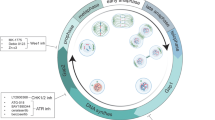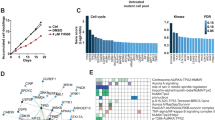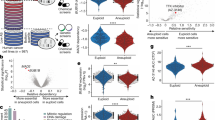Abstract
Inactivation of NHIK 3025 cells ny the mitotic inhibitor NY 3170 (1-propargyl-5-chloropyrimidin-2-one) was measured as loss of colony-forming ability. NY 3170 at a concentration of 0.15 nM allowed no formation of colonies after 12 days of continuous exposure to the drug. Metaphase arrest after treatment with NY 3170 was reversible if the drug was removed immediately after the onset of the arrest. When the cells were kept in mitosis by the presence of NY 3170, inactivation was complete after 8h incubation of mitotic cells with 0.4 nM NY 3170. Using synchronized cell populations, it was shown that mitosis is by far the most sensitive stage of the cell cycle to inactivation by NY 3170. This leads to the suggestion that there is a connection between the inactivating and the metaphase-arresting effect of this drug. The age response curves show that after mitosis the stages in order of decreasing sensitivity to NY3170 are: g2, late S, early S and G1. This is a similar age response to that reported for proliferating cells treated with bleomycin, whereas the mitotic inhibitors vincristine and vinblastine have shown qhite different age response curves.
This is a preview of subscription content, access via your institution
Access options
Subscribe to this journal
Receive 24 print issues and online access
$259.00 per year
only $10.79 per issue
Buy this article
- Purchase on Springer Link
- Instant access to full article PDF
Prices may be subject to local taxes which are calculated during checkout
Similar content being viewed by others
Rights and permissions
About this article
Cite this article
Wibe, E., Oftebro, R. Inactivation by the mitotic inhibitor NY 3170 of human cells in vitro. Br J Cancer 40, 222–227 (1979). https://doi.org/10.1038/bjc.1979.169
Issue Date:
DOI: https://doi.org/10.1038/bjc.1979.169
This article is cited by
-
Inactivation of human cells cultivated in vitro by the new mitotic inhibitors NY 4137 and NY 4138
Investigational New Drugs (1987)
-
Effects of the new mitotic inhibitor pyrimidinsulfone NY 4137 on human cells in vitro and on colchicine binding to tubulin
Investigational New Drugs (1986)
-
Mitotic arrest and interphase inhibition induced by the pyrimidine sulfoxide NY 4138
Investigational New Drugs (1985)
-
Structure-activity relationship of 1-propargyl-5-halopyrimidin-2-ones
Investigational New Drugs (1983)



